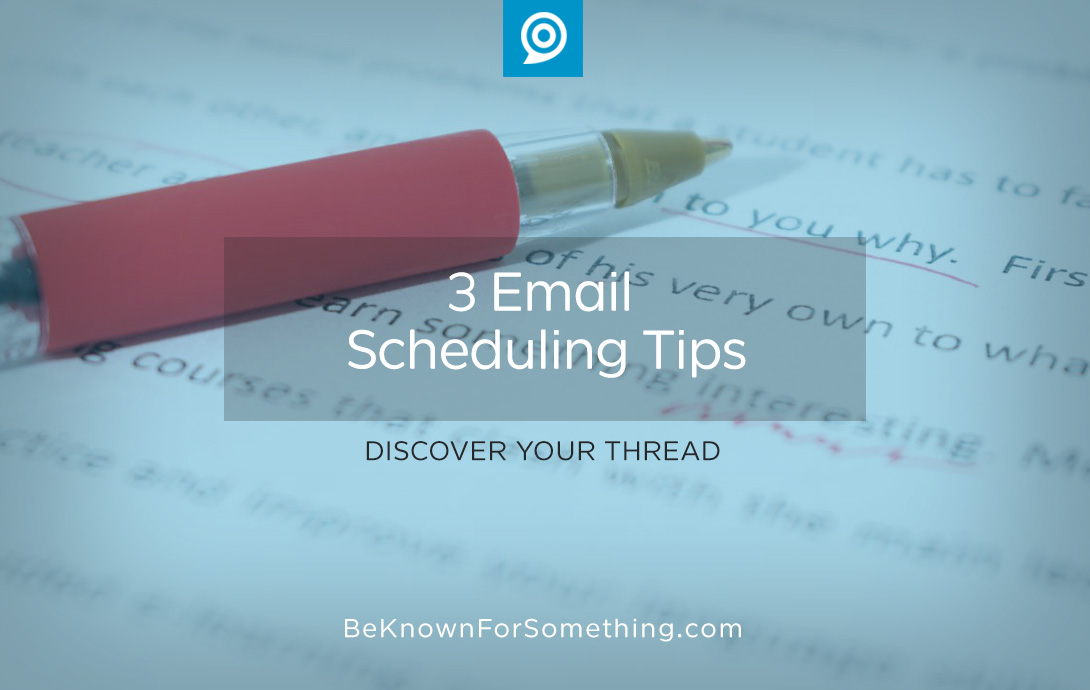3 Email Scheduling Tips

Church communication is easy if you can get people to pay attention. Except we live in a world that only half-listens because they have so much noise around them!
We’re all bombarded with messages, promotions, and information in a multi-level, continuous track so that we end up with 1000’s of communications available to us. The problem? We don’t have the time or attention to process them all. Therefore, we live on “ignore” until something breaks through.
Often, it’s not the tool (social media, email, website, etc.) that makes something breakthrough though; it’s the content or the time its received that elevates it into our consciousness.
Our goal? Make our church messages so relevant and so important that when someone pays attention to them, they are rewarded with the information.
BONUS TIP: Stop wasting people’s time with irrelevant content!
When it comes to tools, we know certain ones breakthrough (with your amazing content) better than others. Add something to your website? It’ll take a long time for people to realize it. Send them a text message? Probably the best way to breakthrough (but be careful of abusing a text message). A letter, surprisingly gets peoples attention if it’s handwritten, personal, and brief. But they’re expensive.
This is why email tends to get used by churches. And it works; if the content and subject lines are correct. But don’t forget about the other part of the recipe: the timing of the email. And that’s controlled by a scheduling program. Here are 3 tips:
- Consider the day you’re sending based on the audience. Think about what day of the week most of the people wouldn’t be opening email (or spending time with the content), and eliminate those days. Then rank the days of the weeks left so that you have a list of days to try sending your emails out on.
- Choose the time of day based on the audience. Think about times in the day when most people in your audience may be looking at email. Most check email first thing in the morning and possibly right after lunch. If you discover 2-3 times, try the different times to check which time is a good time for your audience (the same way you’re trying days of the week).
- Watch open rates and adjust. This is key. Setup a spreadsheet with your options and check open rates for the various times and days you try. Keep in mind that the average open rate for non-profit emails is not much better than 30%. But see if you can gain an understanding of what causes your email to be opened more than another time. You may only get a 5% increase but that matters. Then adjust your schedule to follow your discovery.
Lock down when to send your emails based on how well they breakthrough and make sure you’re utilizing email the best way possible. That way more people will discover your relevant content and you’re not wasting your time communicating to someone not interested.
Want 25 Game-Changing Resolutions?
Related Posts

3 Church Leadership Skills That Transform Your Ministry
You didn’t accept a call to ministry just to maintain the status quo. You were called to lead to inspire,

How to Create a Church Marketing Strategy That Reaches Your Community
You’ve been called to lead a church that makes a difference in your city. That means developing a clear church

Top 10 Church Digital Marketing Strategies for 2026
What’s Changing, What’s Working, and What’s Next 2026 will be a year of rapid change for church digital marketing strategies

